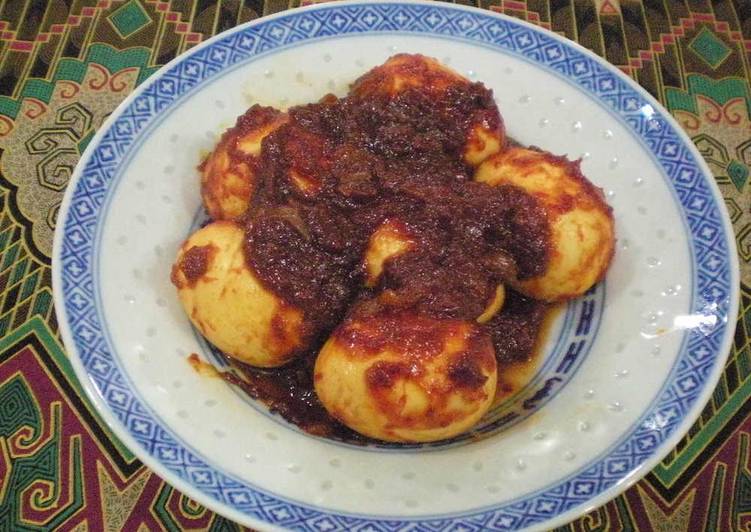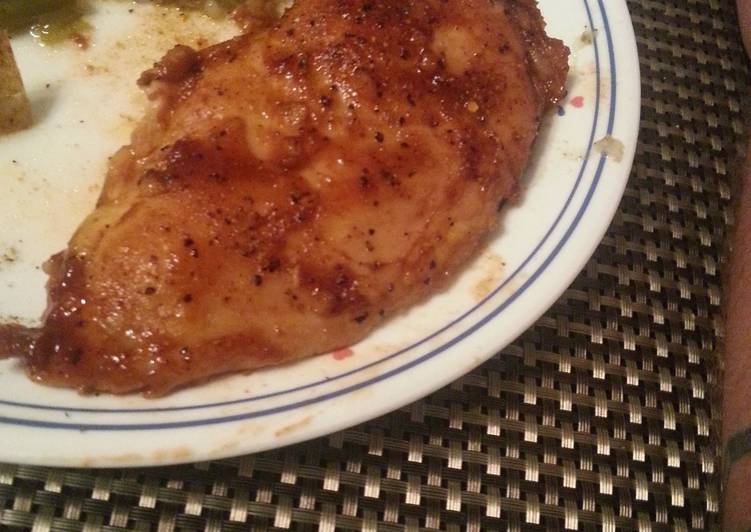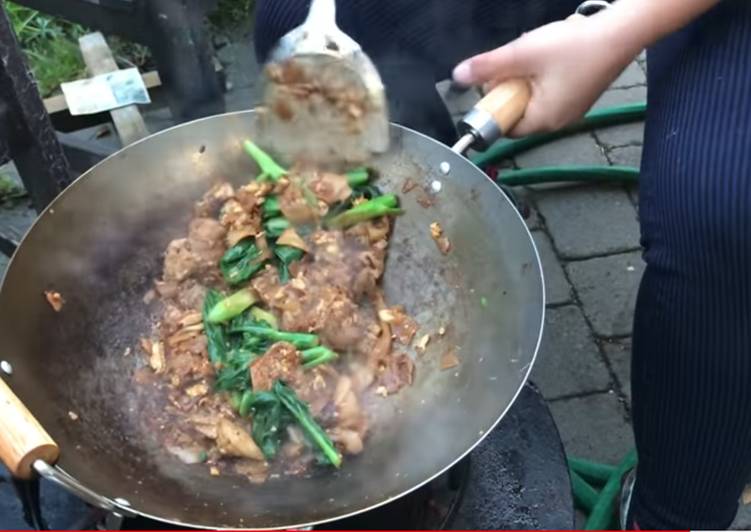
Hello everybody, hope you’re having an amazing day today. Today, I will show you a way to prepare a special dish, sambal telur (malaysian-style hard boiled eggs in chili sauce). One of my favorites food recipes. For mine, I’m gonna make it a little bit tasty. This is gonna smell and look delicious.
Combining cooked sambal with hard boiled eggs, sambal telur or egg sambal is great with rice. Sambal—precisely cooked sambal—is a notably versatile and robust component in traditional Malaysian cooking. Fry hard boiled eggs until the surface blister and turn golden brown.
Sambal Telur (Malaysian-Style Hard Boiled Eggs in Chili Sauce) is one of the most well liked of current trending meals in the world. It’s enjoyed by millions every day. It’s easy, it is fast, it tastes delicious. Sambal Telur (Malaysian-Style Hard Boiled Eggs in Chili Sauce) is something which I’ve loved my entire life. They are nice and they look fantastic.
To get started with this recipe, we must first prepare a few components. You can have sambal telur (malaysian-style hard boiled eggs in chili sauce) using 7 ingredients and 6 steps. Here is how you can achieve that.
The ingredients needed to make Sambal Telur (Malaysian-Style Hard Boiled Eggs in Chili Sauce):
- Prepare 6 Eggs
- Get 1/2 large Onion
- Make ready 5 tbsp Sambal paste
- Get 2 tbsp Tamarind paste
- Make ready 3 tbsp Sugar
- Make ready 1 rounded teaspoon Salt
- Take 1 Vegetable oil
INDONESIAN STYLE SAMBAL TELUR Eggs with sambal or what we call "sambal telur" (telur=egg) in Indonesia is one of the classics I really like. Sambal Terung is a roasted eggplant dish, covered in sambal (a spicy chili-based condiment). Like Tuesday's recipe, this is a dish that comes together easily and would allow me The sauce spread to other countries, most notably Malaysia and the rest of Southeast Asia (I have a theory that Sriracha is. Sambal is a thick red spicy paste made of onion, garlic, ginger and red chillies.
Instructions to make Sambal Telur (Malaysian-Style Hard Boiled Eggs in Chili Sauce):
- Make hard-boiled eggs and peel the shells. Cut the onions horizontally into 5 mm thick slices.
- This is tamarind paste and the package it came in. It's a superior alkali ingredient. If it is too hard to obtain, you can substitute with tender umeboshi (pickled plum).
- Add water to the tamarind paste and dissolve the paste with your fingers. You will only use the strained liquid. Once you use the liquid, repeat with more water at least twice.
- Heat vegetable oil in a pan and sauté the onions. Once they are tender, add the sambal paste and continue sautéing. If it starts to scorch, add water.
- Sauté well and add the tamarind liquid from Step 3 and the boiled eggs. Season with sugar and salt, and simmer until the liquid evaporates.
- You could also use quail eggs instead of chicken eggs. Deep fried tofu is also a good substitute.
It makes a good gravy over almost anything - shrimp, fish, eggs, chicken. Either boil eggs or fry eggs. Telur pindang or pindang eggs are hard boiled eggs cooked in pindang process, originating from Javanese cuisine, Indonesia, and popular in Malay as well as Palembangese cuisine. Sambal Udang (Prawn Sambal) is a fiery and piquant side dish often served as an Nasi Lemak Bungkus, Malaysia's most popular breakfast now with sambal udang (prawn sambal). Sambal Belacan is a popular spicy Malaysian chili condiment consisting of chilies, belacan (shrimp paste) Courtesy of The Malaysian Kitchen cookbook, these plump prawns swimming in a creamy, complex sauce of chili, tomato, garlic, ginger, and curry leaves, demand.
So that is going to wrap this up with this exceptional food sambal telur (malaysian-style hard boiled eggs in chili sauce) recipe. Thank you very much for reading. I am confident you can make this at home. There’s gonna be interesting food at home recipes coming up. Don’t forget to bookmark this page on your browser, and share it to your family, colleague and friends. Thanks again for reading. Go on get cooking!


